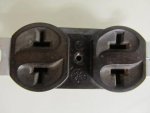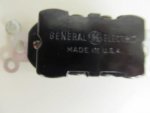K8MHZ
Senior Member
- Occupation
- Electrician
Funny thing is, I have found a few of these receptacles over the years in old houses, most with only 2 prongs, at one time I found a Leviton one and looked it up on their web site from the numbers on the receptacle, there used to be an old thread on it but not sure if it was before the 2003 software change, so at one time they did install them:jawdrop:, more common today is the combo 15 or 20 amp 125/250 volt receptacle that is a duplex with one 250 volt and one 125 volt receptacle, I tried to search Leviton's web site but can not find the old one any more.
P.S. not sure if I ever found a grounding version but I do remember the non-grounding ones.
If you look close, they aren't the same. I have the old ones you are describing right here in my own home.
They (the old 20A 115 volt recepts.) don't have a grounding conductor. Also, the slots are both small, not both large like in the X receptacles. A two prong polarized plug won't fit either way in the old 20A 115 volt receptacles, but will fit both ways in the X receptacle.
I am also not sure if the old 20A 115V recepts. will accept a 240 volt plug like the X receptacles will.
I think this house was built in 1940 or so. It has those receptacles, ashphalt NM in the basement and K&T in the garage. It also as surface mount switches for K&T, those are cool. When I first saw the X receptacles I just thought they were grounded versions of the old 20A 115V's but now I know better.
Last edited:








